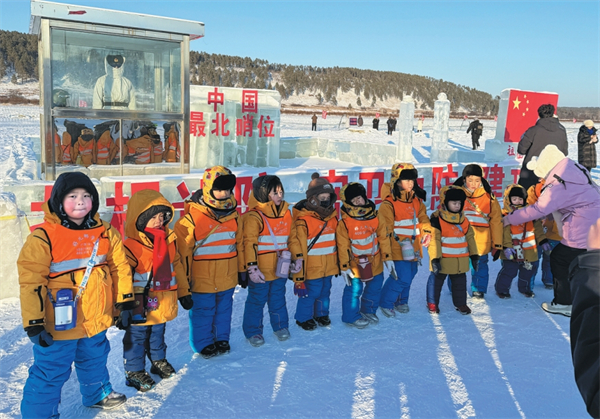Home>Harbin Today
Coal train era ends in rural Heilongjiang
Updated : 2022-07-12
By ( chinadaily.com.cn )
For passengers traveling between Mudanjiang and Changting town in Heilongjiang province, taking the passenger train between the two destinations has become more comfortable.
Upgraded with air conditioning, train No 6286 left Mudanjiang at 5:25 pm on June 19, marking the end of coal-fired trains in the province, according to the China Railway Harbin Group.
"We used the furnaces to boil drinking water for passengers and heat the coaches in the winter," said Cong Guizi, a train attendant. "In the past, I had to start the fires at least two hours before departure.
"On average, 420 kilograms of coal were burned during the two-hour trip. We would get covered in ash and sweat a great deal in the summer. Now, work is easy thanks to the electrical power generating system, and we have more time to improve service and make sure passengers enjoy their trips more."
The 74-kilometer rail line has 11 stops, most of which are located in mountainous areas with underdeveloped roads. A pair of old-fashioned, low-speed trains painted green served residents along the route for over 60 years and became their preferred choice of daily travel.
Changting, a town located in the Zhangguangcai Mountains, has undergone rapid development in its deep-processing timber industry in recent years. Relying on convenient railway traffic, wooden and agricultural products such as chopsticks, lunch boxes and glycosides have been sold across the country as well as overseas.
Li Zhi, a conductor who has worked on the train for 12 years, has seen the great changes along the route.
"At the beginning, there were still many adobe houses in the villages along the railway," he said. "Now, they have been rebuilt with red brick, and it is not unusual to see two-floor or three-floor villas. Villagers are now enjoying better lives."
Every evening, Wang Shengkui takes the train to get to his job at a wood product factory in Changting.
Without roads linking his village to Changting, the 52-year-old farmer spends an hour on the train and returns the next morning.
"I start work at 8 pm and finish at midnight," he said. "After having a rest in the dormitory, I return home on the 6:36 train, " he said. "The train is very convenient. I can easily arrange working and farming, and I earn 3,000 yuan from the factory every month, a large part of my family's income."
For Zhang Guanglai, a farmer from Shanzuizi village, the period in winter just before the Spring Festival is the busiest time of the year.
His handmade doubao have become very popular in nearby city markets.
A sticky steamed bun stuffed with sweetened bean paste, doubao are a popular snack in the northeastern part of China, but few people know how to make them anymore.
Zhang usually prepares a large quantity of the buns every couple of days and sells them in Mudanjiang, which can make him about 200 yuan each time. "That's thanks to this slow train, which allows me to travel," he said. "The extra income can be used for the Spring Festival and spring plowing."
The trains have also brought increasing numbers of visitors to Changting, which has been undergoing a tourism boom in recent years.
In Hada, a village near the Yilong Water Garden, the largest of its kind in the province, more villagers are getting directly involved in tourism.
So far, there are 20 homestays, all of which receive plenty of tourists during the peak seasons.
"We plan to decorate the trains with tourism-themed elements," said Sun Zhenjie, an official from the Mudanjiang Railway Station's passenger transport section.
"We will work with tourism companies to develop more rural tourism packages to contribute to rural vitalization."

Harbin ramps up childcare services
A new comprehensive service center for childcare in Harbin is expected to be finished by the end of the year.
-
Talent policies drive enterprise development in Harbin
Harbin's "30 New Talent Policies" represents an iterative upgrade to the talent policy system, helping attract and retain talent to bolster economic and social development.
-
Official website of 2025 Asian Winter Games goes live
Harbin, the host city of the 9th Asian Winter Games, has announced that the official website for the 2025 event has recently gone live.
-
Harbin launches measures to facilitate more foreign trade
In the first three quarters of 2023, the total import and export value of Heilongjiang province's goods trade hit 218.22 billion yuan.





